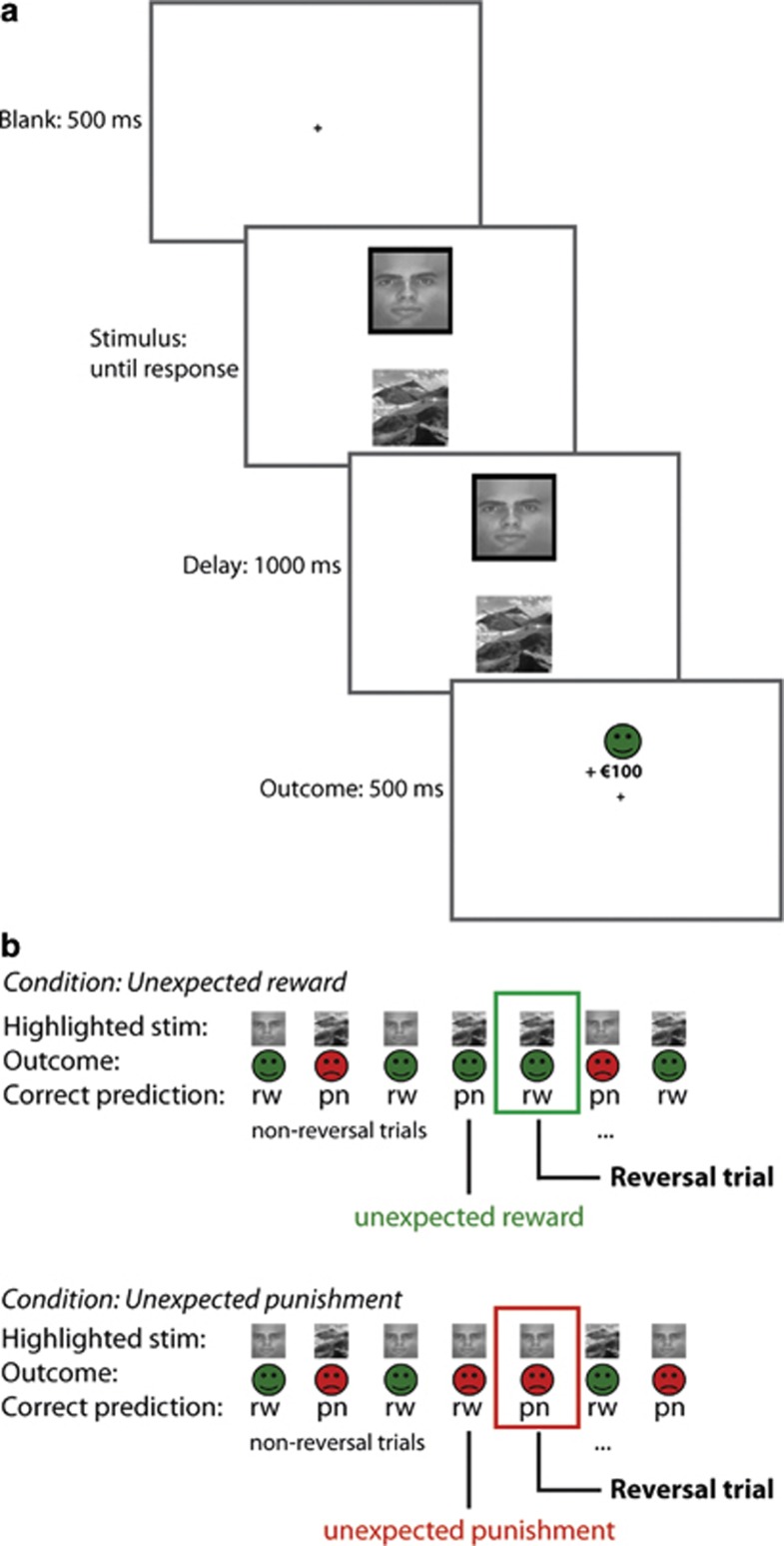Figure 1.
Task design. (a) Example of a reward trial. Two stimuli, a face and a scene, were presented simultaneously. One of the two stimuli was highlighted with a black border and the task was to predict whether this stimulus was followed by reward or punishment, after which the actual outcome was presented (100% deterministic). (b) Example of a trial sequence for the unexpected reward and unexpected punishment condition. The participant learned to predict rewards (rw) and punishments (pn) for the scene and face. Stimulus–outcome associations reversed after 4–6 consecutive correct predictions, signaled by either unexpected reward or unexpected punishment. Measure of interest was the accuracy on reversal trials immediately following the unexpected outcomes.

